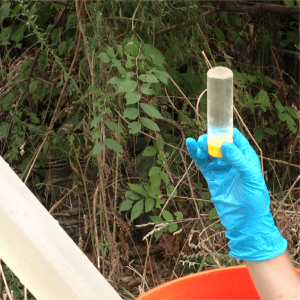The presence of 1,4-dioxane in drinking water has been an on-going concern for many residents of Long Island, New York. 1,4-dioxane is a compound that has been used in a variety of industrial, manufacturing and agricultural operations. It readily mixes with water, and is typically released into the air, water and soil. When it is released into the soil, it does not bind to soil particles so it often migrates into the groundwater. The United States Environmental Protection Agency (USEPA) has identified 1,4-dioxane as a possible human carcinogen, but has not established health-based standards limiting concentrations of this compound. This is especially troubling for Long Island residents because the groundwater is the sole source of the drinking water supply and the groundwater has some of the highest 1-4 dioxane concentrations in the country. For more on the health concerns associated with 1,4 Dioxane, check out How will the 1,4-Dioxane in my Drinking Water Affect my Health? and The Origins of 1,4-Dioxane: How Did It Get Into Long Island’s Drinking Water?
This past year, elevated levels 
As of September 22, 2017, New York State decided it had waited long enough for the USEPA to take control of the situation. Governor Andrew M. Cuomo appointed 12 members to a Drinking Water Quality Council. Their duties as members of this Council will be to ensure that all communities across New York State have access to clean drinking water. This Council will discuss the risks posed by 1,4-dioxane, as well as perfluorooctanoic acids (PFOA) and perfluorooctanesulfonic acids (PFOS); treatment options will also be evaluated. (See PFOA and PFOS are in Drinking Water – What Should I Know?.)
Two meetings were scheduled to discuss recommendations for establishing New York State MCLs for 1,4-dioxane, PFOA and PFOS. The first meeting was held on October 2nd at Stony Brook University on Long Island. At this meeting, the Council participated in 1,4-dioxane presentations related to its toxicology, occurrence in public water systems, and available treatment technologies. To take a look at summary of this meeting, click here. The next drinking water meeting will be held on Wednesday, November 29th in the Capital Region.
If you or your business has any questions regarding 1,4-dioxane, PFOA, or PFOS contamination in drinking water, as well as trace contaminant testing and treatment options, please call Walden Environmental Engineering at (516) 624-7200.
